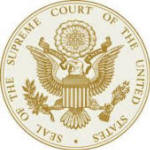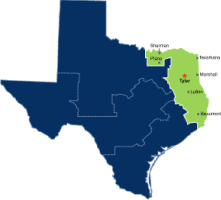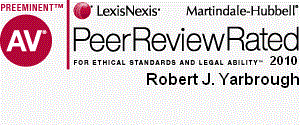Newsletter Issue 100 - October 2017
In this issue:
Computers as authors
Free speech and trademarks
Eastern District of Texas and patent infringement
Ask Dr. Copyright ...
Dear Doc:
I know that there's a court case over whether a monkey that took
a selfie can own the copyright in the photo (or whether there even
is a copyright on it.) I just read that computers are learning how
to write music, paint pictures, and do lots of things that we humans
think are creative. Can computers be authors and own copyrights in
the works that they create? If a computer arranges music (the song
"Daisy", for example) can it earn royalties?
Just asking,
HAL9000
Dear HAL:
You're correct that computers are now making art. Using a branch of
artificial intelligence called "machine learning" computers are now
analyzing thousands of songs, and then composing new ones based on
common features that they detect in the music that they've "heard".
One of LW&H's clients even applied for patent after he built one of
these systems that was capable of understanding musical moods,
motifs, and themes without having to label them with words. That
system, and other like it, are able to write new music that is
similar to existing music, but does not copy at all - it
"understands" what makes one song similar to another. Software like
that may even be able some day to prove that one song is, or is not
a copy of another, simplifying copyright law suits which now require
the expert testimony of musicologists to guide juries in the
features to which they should listen in making their similarity
determinations.
But, back to computers as authors... A group of museums and computer
companies have unveiled "The
Next Rembrandt".

If you've ever seen a real painting by Rembrandt van Rijn, you will
instantly recognize this new "painting" (actually a 3D printed
sculpture) as his style. It's as if, more than 300 years after his
death, he has been brought back to life to paint one more portrait.
But who "owns" this work of art?
Clearly, the paintings on which it is based are in the public
domain, having been created in the Netherlands long before that
country had a copyright statute. Just as clearly, the data about
those paintings used in the project are the property of the museums
that own the paintings themselves (just like the posters that you
can buy in the museum store, they are newly created "derivative
works" that enjoy their own copyright.) So, does that make the new
portrait a derivative work based on the data, which is derived from
the paintings? Or, is it simply in the "style" of Rembrandt, and not
even a painting at all? Is a "style" protected by copyright, even if
that style is just an averaging of many prior works? (Yes, I know,
lawyers seem always to answer a question with other questions...we
learn that in law school.)
While there are few clear answers to any of the questions above, one
thing may be said: current United States copyright law seems to
confer the status of "author" only on real people and on
corporations that derive their rights from real people. Thus, it may
be that a corporation may own (or license) the rights to the data
about Rembrandt's paintings, and other corporations may employ the
programmers who designed the software that "learned" from that data
and produced the new artwork, and thus, it is possible that one or
more corporations owns a copyright in the new artwork.
On the other hand, copyright has long required that a work of
authorship be original, and if it's just a computer program and data
(both of which already exist at the time the new artwork is created)
it's hard to call what happens "original" because the operation of
the computer program is fully determined at the outset. Thus, we
have reached an area that is a specialty of my friend, Professor
Darren Hudson Hick, whose specialty is the philosophy of copyright.
I sent your question to the good professor, and he replied,
In principle, the Next Rembrandt is pretty simple-simpler, in any event, than the monkey photographer. There is unquestionably a person involved: the programmer or a group of programmers. The programmers create a computer program which produces a product - the Rembrandt pastiche. So far as it goes, this is just a more complicated version of an artist who builds a paint cannon that fires a random series of paint pellets at a canvas. No one, I think, would seriously deny that the artist in this case is the "author" of the resulting painting, or that the painting lacks originality in this sense (being original to the artist) because of the method by which it is created. The computer program, like the paint cannon, is a tool (albeit a much more complicated one) for producing the end product. The programmers are responsible for the form of the resulting product in the same way that our artist is responsible for the paint-cannon painting, and so are the authors responsible for the product's originality, to the extent that it has any.
For more on how this automated enigma may be decoded, see Acosta,
Raquel,
"Artificial Intelligence and Authorship Rights".
Are you artificially intelligent (or does your spouse claim that you
are?) Have you authored anything? Quick, call the attorneys at LW&H.
They'd love to meet you and help you to decode the legal situation.
Until next month,
Your very real author,
The "Doc"
SCOTUS Scores One For Free Speech and Redskins Team Rejoices!
The Washington Redskins NFL team has been fighting for years to
maintain its registered trademarks containing the term REDSKINS. Its
on and off again fight has been hotly debated in public, press and
the courts. Finally, the United States Supreme Court has weighed in.
Funny enough, the case before them was not that of the Redskins but
that of an obscure West Coast band, the Slants. Its front-man, Simon
Tao, filed a trademark application for SLANTS, which was rejected by
the United States Patent and Trademark Office (PTO) because it was
derogatory to persons of Asian descent. We won't keep you in
suspense. The Supreme Court rejected the PTO position and held that
the anti-disparagement clause of the Lanham Act, section 2(a), was
an unconstitutional abridgment of freedom of speech. Simon Tao won!
So how did we get here? Our readers may recall that approximately
three years ago the Trademark Trial and Appeal Board ("TTAB")
cancelled the Redskins trademark because it was disparaging to
Native Americans. The question we posed in a short article was
whether the Redskins could continue using its trademark despite
cancellation of its trademark registration.
Since then a lot has happened. The Redskins filed an appeal to the
United States District Court In Alexandria, Virginia. In July 2015,
the district court affirmed the TTAB. The Redskins then filed an
appeal to the United States Court Of Appeals For the Fourth Circuit.
That court stayed the action because Simon Tam's lawsuit, Lee v.
Tam, was pending before the U.S. Supreme Court.
Back to the Supreme Court's opinion in Tam. Justice Alito,
delivering the Opinion of the Court, wrote unambiguously that
section 2(a) of the Lanham Act violates the free speech clause of
the First Amendment: "It offends a bedrock First Amendment
principle: Speech may not be banned on the grounds that it expresses
ideas that offend."
The court rejected the argument that trademark registration is
equivalent to "government speech,"which is typically denied First
Amendment protections. The Court wrote
it is far-fetched to suggest that the content of the registered mark is government speech. If the federal registration for trademark makes the mark government speech, the Federal Government is babbling prodigiously and incoherently. It is saying many unseemly things.... It is expressing contradictory views. It is unashamedly endorsing a vast array of commercial products and services. And it is providing Delphic advice to the consuming public.
Likewise the Court rejected the government's argument that
trademark registration is a form of "subsidized" speech. That
argument basically says that the government is not required to
subsidize speech that it does not wish to promote. Acknowledging
that this area of the law is tricky, Justice Alito concluded that
there was no legal basis or precedent for concluding that trademark
registration was a form of subsidized speech.
Lastly, Justice Alito reasoned that Section 2(a) could not pass
muster even under the relaxed standard for commercial speech. That
standard requires restrictions on commercial speech to serve a
"substantial [government] interest" and be "narrowly drawn."
According to the Court,
The [disparagement] clause reaches any trademark that disparages any person, group, or institution. It applies to trademarks like the following: "Down with racists," "Down with sexists," "Down with homophobes." It is not an anti-discrimination clause; it is a happy talk clause. In this way, it goes much further than is necessary to serve the interests asserted [emphasis in original].
Undoubtedly, the Redskins now have a firm basis in which to
reinstate their registered trademarks.
What does this mean for trademarks that are not disparaging but
"scandalous" under section 2 (a), the so-called "scandalous
provision"? In a recent "Alert" the PTO acknowledged that under Tam,
disparagement is no longer a valid ground for refusal or
cancellation of a trademark registration but the scandalous
provision - a different kettle of fish - while not subject to the
Supreme Court's decision, is presently pending before the Federal
Circuit court in another case, In re Brunetti. Let's see what
happens.
Don't Mess with Texas
The Eastern District of Texas is a large rural Federal judicial
district. The biggest city is about the size of Allentown,
Pennsylvania. Not what you would expect of a hotbed of patent
litigation.
Nonetheless, the Eastern District of Texas has dominated patent
infringement litigation for years. In the first quarter of 2017,
patent plaintiffs filed a total of 938 cases nationwide with 33% of
those cases in the Eastern District of Texas. Of the Eastern
District patent cases, most are pending before a single person,
Judge Rodney Gilstrap, sitting in Marshall, Texas (population
24,000).
Why so many patent infringement cases in rural Texas? Why so many
before Judge Gilstrap? In short, what Switzerland was for banking,
the Eastern District of Texas became for patent plaintiffs.
Switzerland developed banking rules that favored persons who made
decisions on where to deposit large amounts of money. The Eastern
District of Texas developed rules that favored persons who made the
decision of where to file patent infringement lawsuits. The Eastern
District developed procedures that moved patent cases quickly to
trial, that were generally friendly to patent plaintiffs and that
were relatively expensive for patent defendants. For a history on
the rise of Marshall, Texas as a center for patent litigation, see
Kaleigh Rogers' article.
Last month we told you how the Supreme Court's new TC Heartland
decision effectively pulled venue for most patent cases from the
Eastern District of Texas.
Or did it?
In TC Heartland, the Supreme Court limited the venue over patent
cases against corporations to the state of incorporation or
"...where the defendant has committed acts of infringement and has a
regular and established place of business."
On June 2, after the TC Heartland decision, Uniloc Corp. sued Apple
and Google in the Eastern District for patent infringement. Uniloc's
argument for venue over Apple is based on the presence of two Apple
retail stores in the Eastern District. The argument for venue over
Google is based on use in the Eastern District of Google services by
consumers, by Internet sales, and by Google Street View.
We do not yet know whether these factors will be enough for the
Eastern District to hear the cases, but Congress is watching and
considering wether to limit the venue of patent infringement
lawsuits even more.

